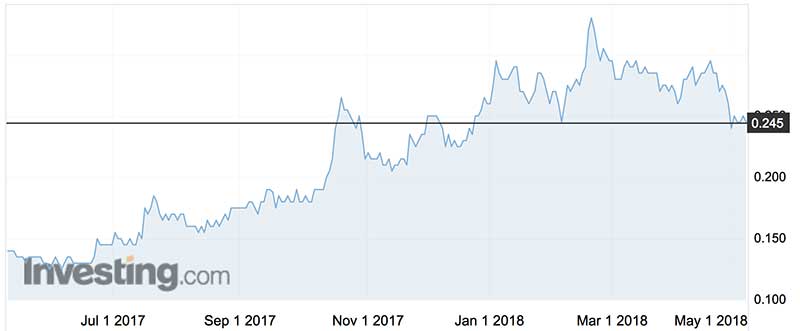You might be interested in
Mining
Resources Top 4: Sierra Nevada Gold strikes it lucky with strong hits at historic Warrior
News
In Case You Missed It: O&G production, a graphite plant and a Chilean gold anomaly
Mining
A major American hedge fund has raised its stake in bauxite miner Metro Mining.
New York’s BlackRock Group is one of the biggest investors in Australia’s financial markets with around $100 billion invested in Australian listed companies and fixed income paper.
The world’s 10th largest hedge fund has injected more cash into Metro Mining (ASX:MMI), bumping its shareholding to 10.4 per cent after buying a further 16.2 million shares on-market.
“BlackRock have been a substantial shareholder on our register for probably six months now,” Metro CFO Duane Woodbury told Stockhead.
“They came in at our last capital raising, so they’ve obviously liked the story for some time.
“We had really no idea that they were going to buy further stock, but I think it’s a vindication that the mine has moved from development into first production.”
Earlier this week Metro announced that its first shipment of 62,000 tonnes of bauxite from its Bauxite Hills mine in Queensland had set sail for China.

Bauxite is the main source of aluminium.
The shipment is being delivered to Xinfa Group, one of China’s largest integrated aluminium companies.
Metro has a four-year binding agreement to supply Xinfa with 1 million tonnes of bauxite in the first year followed by 2 million tonnes per annum for the next three years.
Investors are taking an increased interest in the company, which only started mining in the renowned Weipa bauxite province in April.
Weipa on the Cape York Peninsula is where mining giant Rio Tinto is mining and exporting more than 30 million tonnes of bauxite each year.
Over the past year, Metro’s share price has spiked 169 per cent to a peak of 35c before cooling to 24.5c.
Mr Woodbury believes the company will see a further share price uptick after a few months of production.
“We’re at that point now where we’ve been through a de-risking process and we’ve moved from development into commissioning and now into production, and as you de-risk the project then obviously the valuation will reflect that,” he said.
“So I would’ve thought that once we can show that we’ve got three or four months of production and sales under our belt and we’ve started to get the cash flow coming in from that then I think investors will reflect and value us as a producer rather than a developer.”